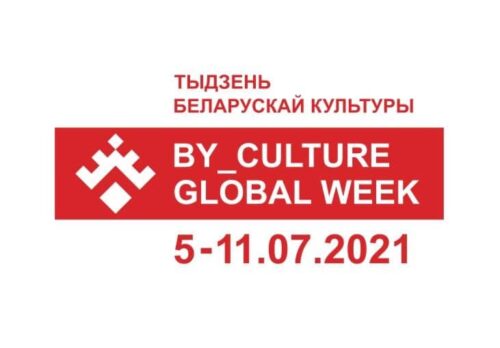Shot 1
The border between two countries. A plot of land in the borderland is well ploughed to see whether anyone has crossed. From time to time the silence is pierced by dogs howling and sounds of patrolling vehicles. In the vicinity there is a watch tower. In the middle of the day a man with a small backpack with stripes of insulating tape across it emerges from the trees and runs as fast as he can…
Shot 2
Evening. A typical yard in the suburb in a big city. Two masked bandits grab an artist on a children’s playground. Next to them, a girl is standing, the artist has just been teaching her to draw a little while ago. She, her mother and the neighbours see how they pin down the artist to the ground, beat him into unconsciousness and drag him away.
Shot 3
Imagine that you are an aspiring drummer. You are rehearsing in a garage and all of a sudden a dozen riot police rush in. They detain everyone like gangsters – shouting to everyone to put their faces down against the floor, twisting arms behind your back. In the police station, they record a video asking you what crime you committed, you reply that you were just studying rhythm. The court sentences you to six years in prison.
This is not a description of a new action film, military drama or anti-utopia. This is reality in Belarus.
The first case, is that of theatre and film actor Ilya Yasinsky who fled to Lithuania. He was detained during one of the peaceful demonstrations after the elections in Belarus. Law enforcement officers had beaten him so badly that his spine was fractured. When he was in the hospital, in the theatre where he used to perform, a wheelchair was brought onto the stage in his place. Later Ilya found out that a criminal case was initiated against him. As soon as he could walk again, he decided to escape. Now Lithuania is his refuge.
The second case is about the artist Raman Bandarenka, who died in hospital after being beaten in his own yard, asserting the right to tie ribbons in the colors of the national flag (white-red-white) to a fence. Unknown persons came to cut them off. These people were soon recognised as former athletes close to the dictator – presumably, a world renown Muay Thai boxer, who trained the riot police, and the chair of the national ice hockey federation.
In the last case, we talk about Alyaksej Sanchuk, who lifted spirits during the marches by playing drums. He was identified by police and taken away during a rehearsal. He waited in prison for six months for trial, then was subsequently sentenced to six years in prison for his participation in “ mass riots”.
After 9 August, when the Belarusian regime had again falsified the results of the elections, one can count 35,000 shots like these. That is how many people have been detained from that day until today. To understand the scale of repressions for Belarus, the comparable number for Finland would be 20,000 people as many as had died in the 1939 – 1940 Winter War.
And every shot is a unique story. For someone like Raman it has a tragic end (while the death toll known to the rights activists is at least ten, the exact number is unknown). Others were handed unbelievable prison terms for nothing, like Alyaksej (currently 517 people are recognised as political prisoners, but the number of politically motivated trials is much higher). Still others left or escaped like Ilya, even though it is very difficult to do today – by land Belarusians can leave the country once every six months, but even then, only with a work permit from abroad, and following the scandal with Raman Pratasevich the planes no longer fly from Belarus to Europe.
In such dire circumstances every act of solidarity and support is worth gold. We, the Belarusian Council for Culture, have taken responsibility for people in the creative sphere, who have suffered from repressions. We look for opportunities to directly support them or their creative projects. We pay fines, provide mental health support and legal assistance, help to leave or find a new job.
We say that without culture there is no nation. Last year Belarus truly felt like a nation, with many discovering Belarusian music, poetry, art. And thanks to this, we became stronger.
Through culture we draw attention to the situation in Belarus. Together with the democratic forces of Belarus, the Council for Culture initiated the Global Belarusian Culture Week on 7 July. We propose to celebrate this event during the entire week from July 5th through the 11th. On July 7th, three famous Belarusians were born – the poet Janka Kupala, the painter Mark Chagall and the writer Jan Chachot. The concept for this day is similar to the Snellman Day or Day of Finnish identity.
Every foreign friend of Belarus can take part in the Week of Belarusian Culture.
How?
It is simple.
You can support Belarusian artists and their new projects on https://byculture.org/en/donate
Thanks to popular support we managed to assist more than 500 culture workers in 280 different cases.
And you can recite a signature poem “And, say, who goes there?” by the Belarusian classic and July 7th honouree Yanka Kupala, in which he already described Belarusians’ striving for freedom, 116 years ago. You can record it and post it in the social media with the hashtag #by_culture
The text is here:
And, say, who goes there?
And, say, who goes there? And, say, who goes there?
In such a mighty throng assembled, o declare?
– Belarusians!
And what do those lean shoulders bear as a load,
Those hands stained dark with blood, those feet bast-sandals shod?
– All their grievance!
And to what place do they this grievance bear,
And whither do they take it to declare?
– To the whole world!
And who schooled them thus, many million strong,
Bear their grievance forth, roused them from slumbers long?
– Want and suffering!
And what is it, then, for which so long they pined,
Scorned throughout the years, they, the deaf, they blind?
– To be called human!
Translation by Vera Rich
You can raise the white-red-white flag, take a picture and post it in the social media with the hashtag #by_culture
Let’s hope that this Belarusian “movie” will have a happy end and that this will take place soon, thanks to the brave Belarusian people and support of those from around the world who are not indifferent.
Long Live Belarus!
Siarhej Budkin
Siarhej Budkin is the CEO of the Belarusian Council for Culture.

